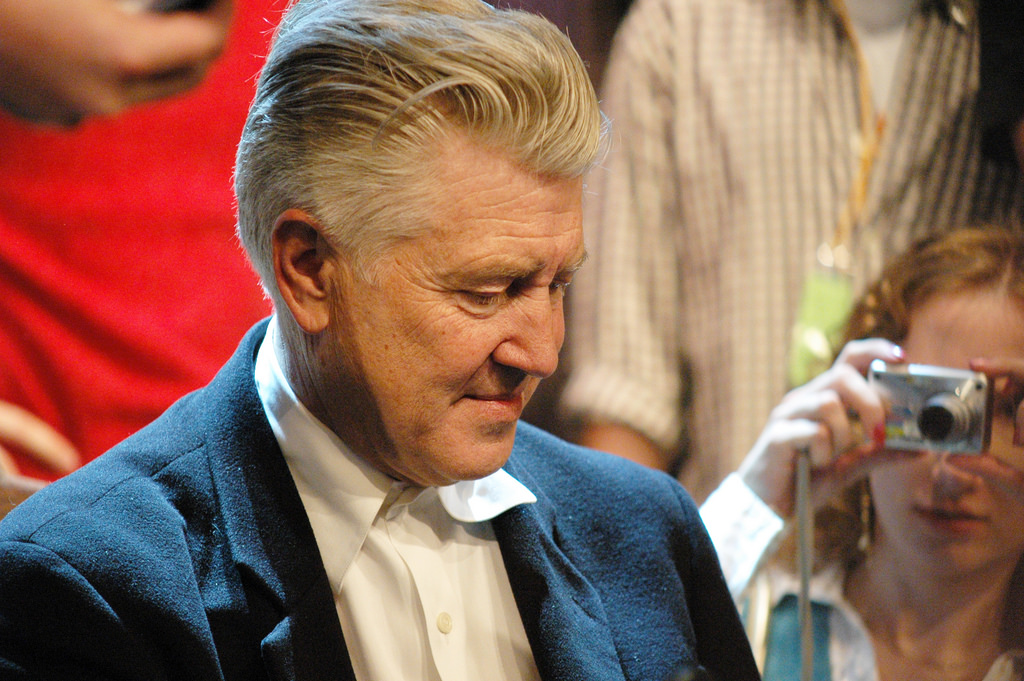In a behind-the-scenes clip from David Lynch’s final project, Twin Peaks: The Return, a crew member tells him that they only have two days to shoot a scene. Lynch frowns, and searches his pocket for another cigarette.
“Why?” he demands.
Someone mumbles an explanation about someone else’s schedule, but the nasal tirade is already underway. “This is absolutely horrible.” In his fury, it’s difficult to say whether he stops to smoke or to speak. “We never get any extra shots; we never get any time to experiment.” He pounds the table. “We never get to, you know, go dreamy or anything.”
This is not the only video of Lynch going berserk when someone interferes with his process. How maddening this must have been for the auteur, when the free and slow approach to filmmaking, the chance to “go dreamy”, had won him overnight success (literally, at first). His feature film debut, Eraserhead, premiered at the 1977 LA Filmex Festival as a midnight movie, a slot reserved for independent, avant-garde filmmakers with a budget as spare as their audiences. These were films that could afford to flop, and usually did. But with lighter pockets, directors were free to experiment – no big-bucks producer was around to stub their cigar on the final draft.
Only in a sparsely filled theatre, in the early hours of the morning, could a ‘cult-director’ like David Lynch have been conceived. And his conception was unforgettable. The opening scene of Eraserhead, shot in shadowy black and white, depicts a spermatozoon uncoiling from the protagonist’s mouth; after a buboed man pulls a lever, it wriggles through space to make cinematic legend.
As with all great art, there is no single explanation for Lynch’s popularity. The first episode of Twin Peaks, aired in 1990, is among the most watched TV pilots in history. Sitcoms like Cheers and The Cosby Show had dominated ABC in the 80s, and America’s Funniest Home Videos played immediately before Lynch’s network debut. Perhaps, fed up with canned laughter and neat narrative, the nation wanted to feel disturbed. If the storyline of who killed Laura Palmer was the hook of Twin Peaks, it was the velvet visuals, oddball characters and general weirdness of the show which kept its audiences transfixed. In a miracle of modern television, Lynch made the avant-garde conformist.
But the show’s prime was brief. Early into the second season, producers became paranoid they would lose their audience if the mystery remained unsolved, and Laura Palmer’s killer was revealed earlier than Lynch had intended. Only then did ratings drop, and Twin Peaks was cancelled. The director’s work had suffered from executive meddling before. Deeply humiliated by the comprehensive failure of Dune in 1984, he had his name credited as ‘Judas Booth’ for its TV run. But it was Lynch, not the producers, who had betrayed and killed his art. After ceding the director’s cut, he trusted that the studio would realise his vision – if his vision existed at all. “I started selling out even in the script phase,” he confessed to Stuart Mabey in 2006. Lynch was sorely punished for his leniency, along with the production company, which lost at least $15 million at the box-office, over a quarter of its budget.
Even with autonomy, Lynch would frequently make losses on his films. But if fortune would be fickle, he would be unbending. Lacking the funds to advertise Inland Empire, he ruled out negotiating with Hollywood moguls for aid. Instead, set up on a Los Angeles street corner, he sat between a cow and a huge poster of Laura Dern, promoting the film alone. “Without cheese, there wouldn’t be an Inland Empire”, read his placard. I’ve watched the film: with a runtime of 197 minutes, all handheld shots and trauma-montage, it dehydrated and depressed me. Yet there was no doubting that each scene belonged entirely to Lynch. Whether I enjoyed it felt irrelevant; this was a vision uncompromised, and to slate the film as obscure or impenetrable would be to assume that he owed us something.
Major studios still try to predict our wants and needs, but Lynch seemed to know our darker desires. It’s unsurprising that his most popular films, Mulholland Drive and Blue Velvet among them, are like broadcasts from the subconscious. Deeply haunting and oddly beautiful, they lurk just below the intellect, but are no more exasperating than a nightmare. For Lynch, going dreamy was not just an aesthetic: it was a responsibility.


